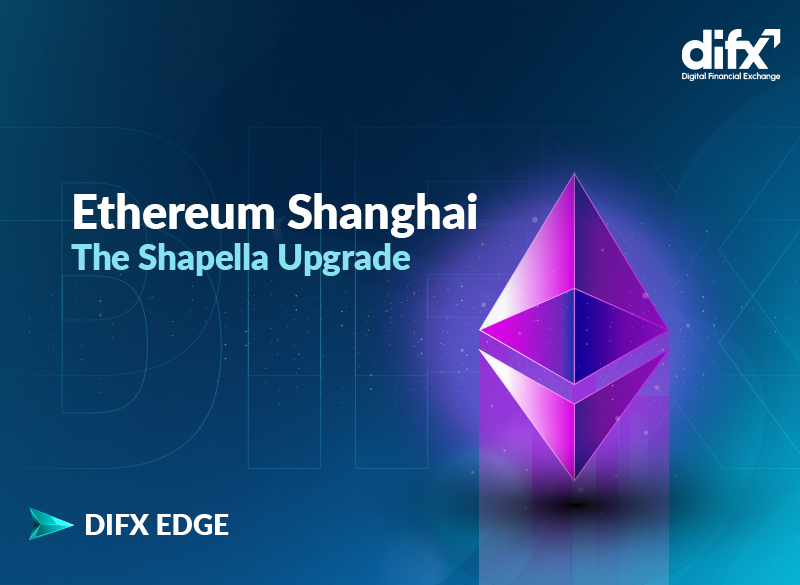Slated for April 12, 2023, the Ethereum Shanghai upgrade is a major upgrade to the Ethereum blockchain that aims to transition its consensus mechanism fully from proof-of-work (PoW) to proof-of-stake (PoS). Since the Merge, which saw the Ethereum mainnet combine with the PoS Beacon Chain, users haven’t been able to remove their staked funds. This is where the Shanghai Upgrade comes into to play to resolves this issue and add a withdrawal functionality for their staked ETH since the Beacon Chain launch in December 2020. This upgrade grants the right to withdraw funds to approximately half-a-million validators, each of whom had to provide at least 32 ETH.
Shapella Upgrade Explained
The Shapella upgrade introduced in the Ethereum Improvement Proposal (EIP) 3198, is a planned upgrade to the Ethereum blockchain that aims to improve its transaction fee mechanism and address the gas fee pricing model of the network. Coined by the Eth devs, the word Shapella is a combination of “Shanghai” and “Capella,” aka the two proposed Ethereum Improvement Proposals.
According to the devs, the expected upgrade will introduce new functionality to both the execution and consensus layer of the Ethereum blockchain.
Currently gas fees are the fees required to perform transactions and execute smart contracts on the Ethereum network. However, the gas fee pricing model is determined by a first-price auction system, where users bid for limited block space by offering a specific gas price. The highest bidders get their transactions included in the next block, while others may face delays or even failures.
This is where the Shapella upgrade, which combines the changes to the execution layer (Shanghai) and consensus layer (Capella), proposes to replace the first-price auction model with a new mechanism called “Elasticity-based Gas Fee Pricing.” This new model adjusts gas fees dynamically based on the network’s usage, making the fees more predictable and stable. The aim is to reduce the volatility and unpredictability of gas fees, making transactions on the Ethereum network more affordable and accessible for users.
How will the upgrade effect the Ethereum Network?
Withdrawal of Staked ETH
Very importantly, the Shapella upgrade will enable validators to withdraw their stake from the Beacon Chain back to the execution layer. At the time of writing, the value of the total locked ETH on various DeFi protocols is $36,786,287,783 at an exchange rate of $1,925, which means that approximately 19.1 million ETH is currently being staked. In case a large amount of ETH is unlocked and eventually dumped in the market, the price of ETH could plummet. On the other hand, the fact that users can have access to their staked ETH anytime they want could encourage more users to stake their ETH for rewards, leading to a rally in the price of ETH.
Increased Adoption
The Shapella upgrade aims to make Ethereum gas fees more predictable and stable. This could potentially attract more users and developers to the Ethereum blockchain. Lower and more stable gas fees could encourage increased adoption of dApps and smart contracts on Ethereum, leading to higher demand for ETH.
Improved User Experience
The current first-price auction model for gas fees on Ethereum can result in high fees during periods of high network congestion, which can deter users from transacting on the network. The Shapella upgrade’s proposed elasticity-based gas fee pricing model could result in a more user-friendly experience with predictable and stable gas fees, making Ethereum transactions more accessible and affordable for users.
Enhanced Network Efficiency
Additionally the upgrade’s proposed elasticity-based gas fee pricing model aims to optimize the allocation of block space based on network usage, which could lead to improved network efficiency. By dynamically adjusting gas fees based on demand, the Ethereum blockchain could operate more efficiently, with transactions being processed in a more timely and cost-effective manner.

